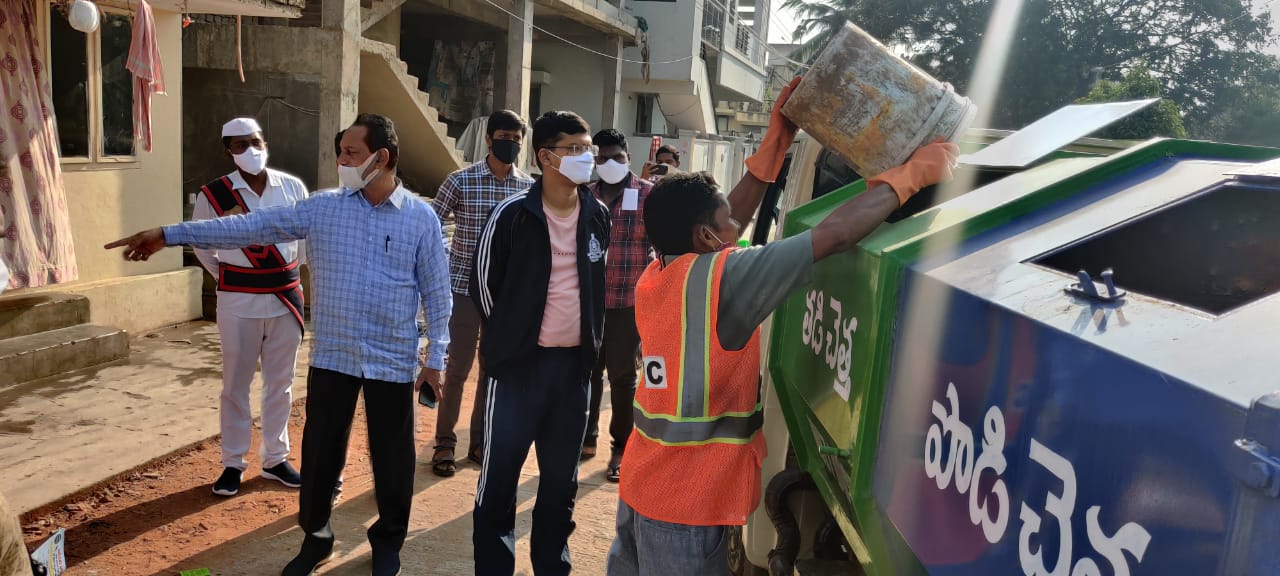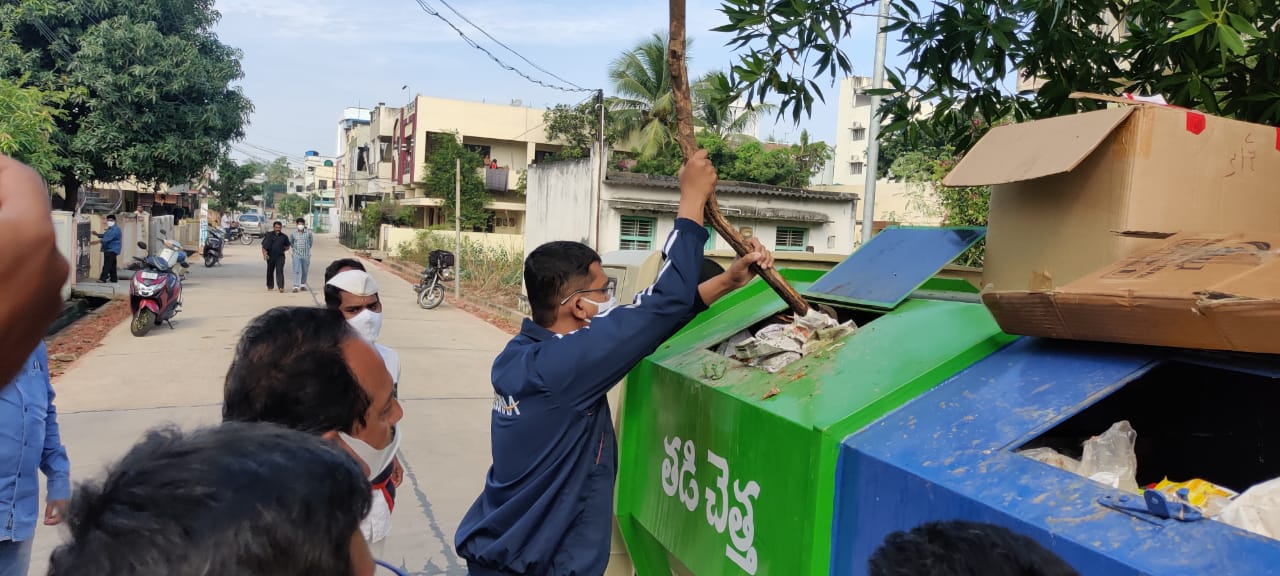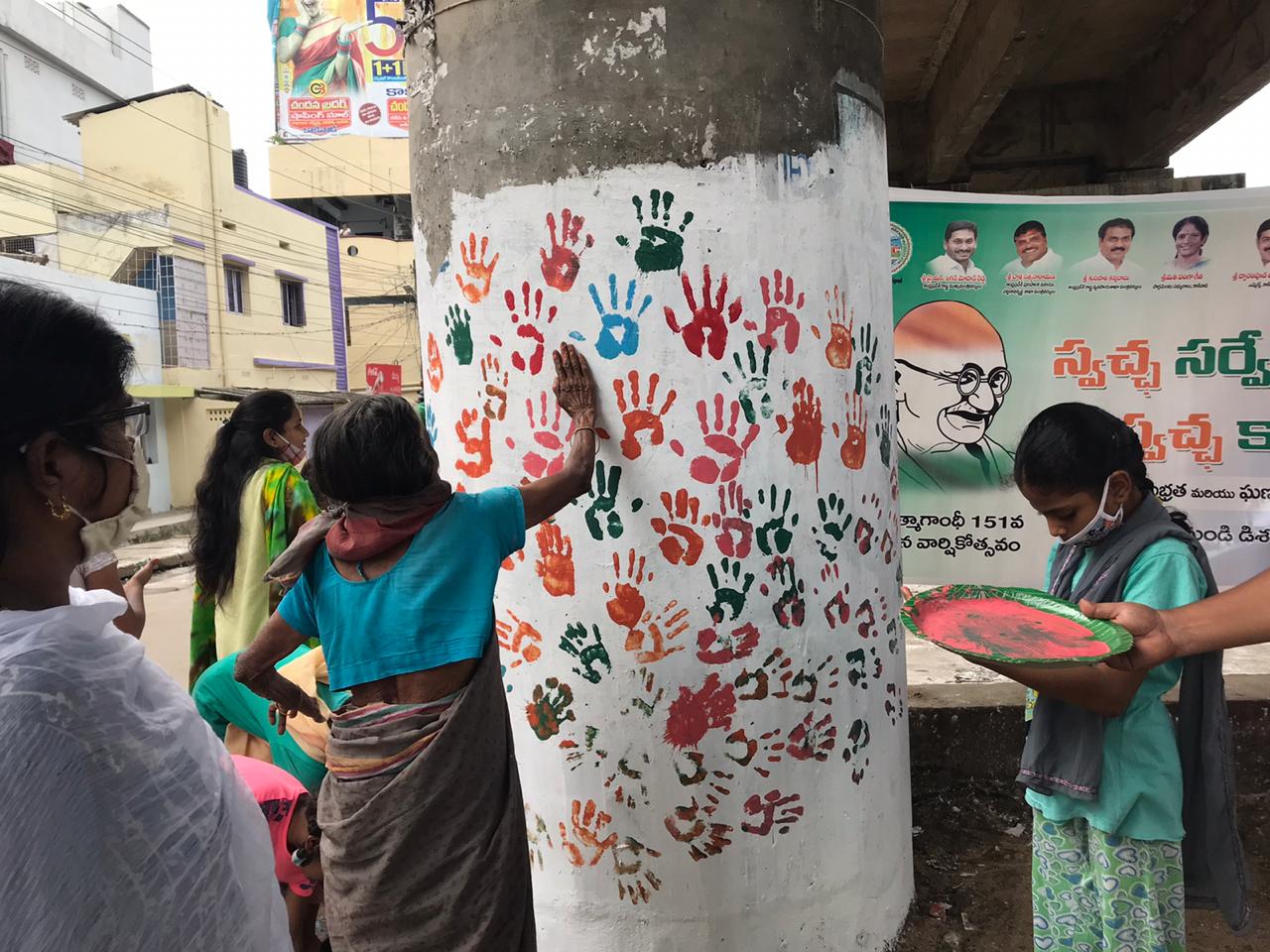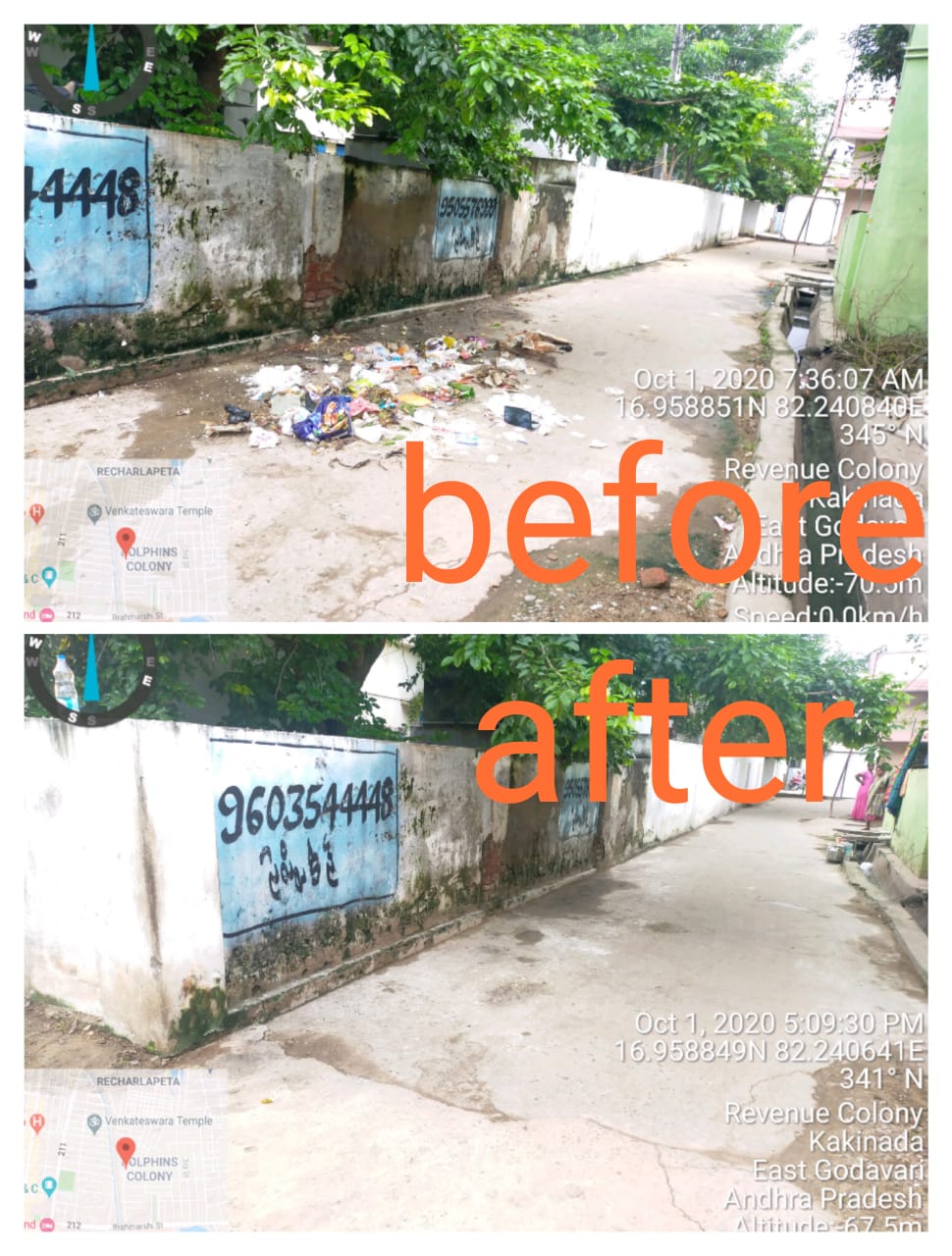Andhra Pradesh’s Kakinada city Municipal Commissioner, IAS Swapnil Pundkar, has devised a rather innovative method to deal with the city’s garbage littering issue.
Here, after due verification of facts, if a household is found dumping garbage on the streets, or in places where it should not, the Municipal Commissioner and his team tracks down the culprit and ensures that it is sent right back to the house, as a “return gift” from the city.
With about three weeks into the launch of what is being called the ‘return gift campaign’, Swapnil says that he is already getting to see a slight shift in the attitude of how people behave with respect to littering of garbage.

Speaking to The Better India, he says, “In Kakinada, we have almost 1200 sanitary workers, of which almost 900 of them are deployed to go door-to-door and collect garbage on a daily basis. Despite this, we found that people would take the liberty of dumping the garbage on the sides of the road or other such places.”
As a city, there is extensive monitoring and continuous surveys being conducted to ensure that the systems are working fine. Swapnil says, “We have installed RFID (radio-frequency identification) tags on the gates of houses in the city, which allows us to collect data on whether our sanitary worker has collected the garbage, if the household declined to hand over the garbage etc.” With this data, the team members were able to assess which houses were handing over garbage and which ones were dumping it on the road.
Need for change in mind-set

“The process of monitoring which households do not hand over the garbage and create trouble was something that was being monitored for almost three months,” says Swapnil. The team started with having discussions with the citizens and while some of them saw reason and accepted the system, some others were vehement in saying that they wouldn’t hand over the garbage to the sanitary workers.
Swapnil mentions that some of their reasons were rather bizarre. “From saying that because my house help is not available during the time the sanitary workers come for the garbage collection to saying that because a neighbour is dumping the garbage on the street corner, they will also follow suit — we have had to hear some very strange justifications for their actions.” The fact that the house gates are fitted with the RFID tags helps the team ascertain whether or not the garbage has been handed over every morning. Swapnil says, “There were some households where for almost three to four days no garbage was handed over. One cannot possibly collect so many days’ garbage and keep it inside the house and so we started tracking these households.”
“I could not see the streets of my corporation lined with garbage, and thus we started the ‘return gift initiative’,” he says.
Beautifying Garbage Vulnerable Points

Garbage Vulnerable Points (GVP) are those areas where the garbage gets piled up because of the constant dropping of garbage by local residents, travellers, passerbys or in spots that earlier had dustbins.
“We have identified places that are GVP and are working towards ensuring that we change that,” says Swapnil. In Kakinada, when Swapnil took charge in June 2020, there were almost 150 GVPs and with consistent work over the last five months, they have reached 50 GVPs.
“Our biggest achievement has been the conversion of the fence sitters, who have actively started working towards maintaining cleanliness and not dumping garbage anywhere they please,” says Swapnil.

Swapnil is confident that this initiative will help in bringing about the much-needed change in mind-set. “If everyone starts to follow the rules, even the few who want to deviate will think twice,” he says in conclusion.
(Edited by Yoshita Rao)





































































